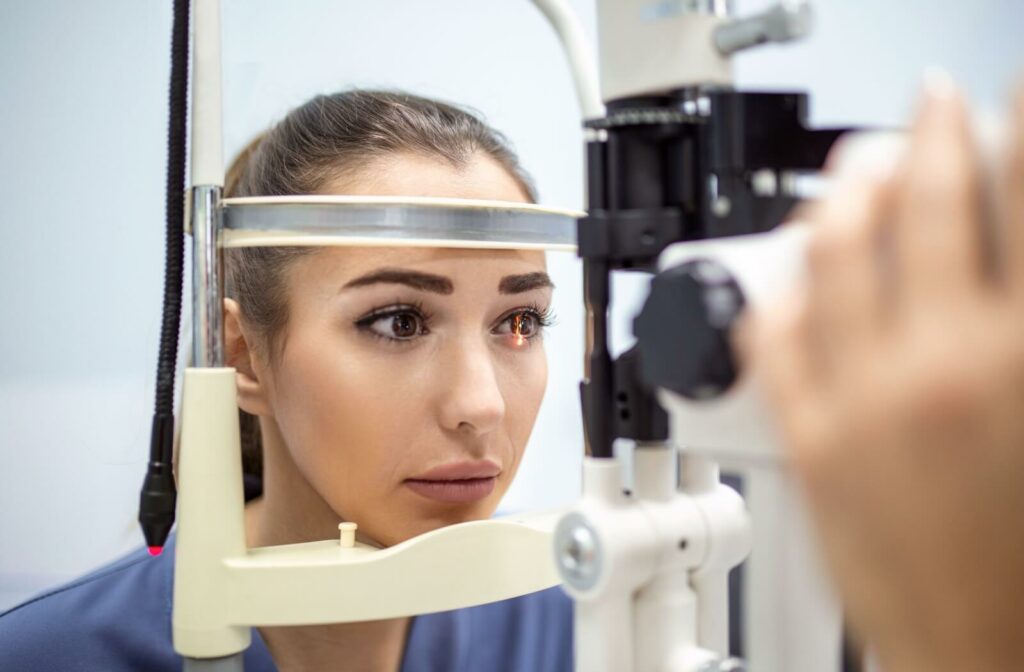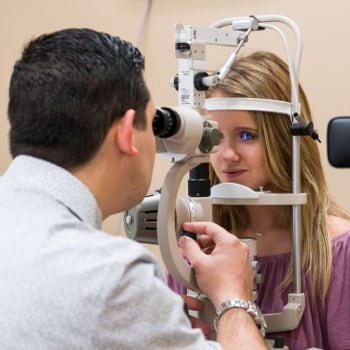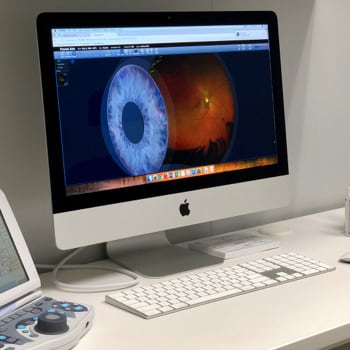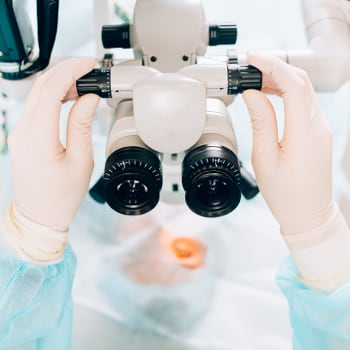Glaucoma is often called the “silent thief of sight” because it can progress slowly, sometimes without noticeable symptoms until permanent vision loss has already occurred. But how long does it take to develop?
The answer isn’t the same for everyone. The speed of glaucoma’s progression depends on the type of glaucoma, how early it’s diagnosed, and how early treatment begins.
What Is Glaucoma?
Glaucoma refers to a group of eye conditions that damage the optic nerve—the nerve responsible for sending visual information from your eyes to your brain. This damage is most often linked to high intraocular pressure, but glaucoma can also occur with normal eye pressure.
Over time, the optic nerve fibers deteriorate, leading to gradual and irreversible vision loss. Because vision loss often starts with peripheral (side) vision, many people may not realize they have glaucoma until the condition has progressed.
How Quickly Can Glaucoma Progress?
Glaucoma doesn’t look the same for everyone. There are several different forms of the condition, and each one can progress at a different pace. The progression of glaucoma depends on its type:
- Open-Angle Glaucoma: This is the most common type. It usually develops slowly over several years. Patients may not notice vision changes until the condition is already advanced.
- Angle-Closure Glaucoma: This form can develop quickly and may cause sudden eye pain, nausea, or blurred vision. It’s considered a medical emergency that requires immediate attention.
- Normal-Tension Glaucoma: Even when eye pressure is within a typical range, optic nerve damage can still occur. The pace of progression varies, but it’s often slower than angle-closure glaucoma.
- Congenital Glaucoma: Present at birth, this rare form develops differently in children and requires early detection and treatment.
In general, glaucoma is a lifelong condition. While some forms develop over years, others can advance much more quickly. Regular eye exams are essential for detecting glaucoma before vision loss becomes severe.
Why Early Detection Matters

Because glaucoma doesn’t usually cause pain or other early symptoms, many people don’t know they have it until irreversible vision loss has already occurred.
Eye exams that include pressure testing (tonometry) and optic nerve evaluation are the only way to catch glaucoma in its early stages. Early detection gives patients the chance to slow progression and preserve vision.
Although the idea of permanent vision loss can feel daunting, catching glaucoma early means you can usually continue your daily activities while protecting your long-term sight.
Risk Factors for Glaucoma
While glaucoma can affect anyone, some people are more likely to develop it because of age, health history, or genetics. Common risk factors include:
- Age (more common over 60)
- Family history of glaucoma
- High eye pressure
- Certain medical conditions, such as diabetes
- Previous eye injuries
- Long-term use of steroid medications
Understanding your personal risk can help determine how often you should have comprehensive eye exams.
Lowering Your Risk for Glaucoma
While glaucoma can’t always be avoided, there are steps you can take to lower your risk and support long-term eye health:
- Regular Eye Exams: Schedule routine exams, especially if you’re over 40 or have risk factors.
- Manage Health Conditions: Keeping blood pressure and diabetes under control may help lower risk.
- Protect Your Eyes: Wear protective eyewear to prevent injury during sports or work.
- Exercise Safely: Regular, moderate activity can support overall eye health
Treatment Options for Glaucoma
Treatment focuses on lowering eye pressure to reduce further damage to the optic nerve. Depending on the type and stage of glaucoma, your eye doctor may recommend:
- Prescription Eye Drops: Often the first step in treatment, these lower eye pressure by reducing fluid production or improving fluid drainage.
- Oral Medications: Sometimes prescribed alongside eye drops.
- Laser Therapy: Used to improve drainage and reduce eye pressure.
- Surgery: For advanced or resistant cases, surgical procedures can help create new drainage pathways.
Tonometry and other diagnostic tools allow eye care professionals to track pressure and evaluate how well treatments are working. With consistent management, many people with glaucoma can maintain useful vision throughout their lives.
Most patients can manage glaucoma successfully with consistent care, allowing them to maintain their routines and independence.
Protecting Your Vision for the Future
Glaucoma often develops slowly, sometimes over years. However, without treatment, it can cause permanent vision loss. Regular exams remain the most reliable way to detect glaucoma early and protect your sight. With a personalized care plan and regular follow-ups, many people with glaucoma continue living full, active lives.
At Great Hills Eye Care, we’re committed to providing thorough eye disease diagnosis and management. Conveniently located in the same building as Costco, with our own separate entrance, we make it easy to access the care you need, without pressure to purchase glasses or contacts on-site.
Book your eye exam today and take a proactive step toward protecting your vision.














